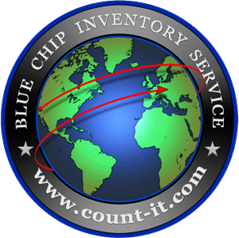
Photo by Tiger Lily: https://www.pexels.com/photo/men-working-in-a-warehouse-4481528/
In the fast-paced business world, effective inventory management plays a vital role in maximizing profitability and customer satisfaction. As we step into 2023, it is crucial for businesses to adopt innovative strategies and leverage technology to streamline their inventory management processes. In this comprehensive guide, we will explore the latest trends and best practices to help you optimize your inventory management in the dynamic landscape of the new year.
The Evolving Landscape of Inventory Management
1.1 The Impact of E-commerce: Discuss how e-commerce has transformed inventory management, with the growing demand for fast order fulfillment and accurate inventory tracking.
1.2 The Role of Automation: Highlight the significance of automation in inventory management, including the use of robotics, artificial intelligence (AI), and machine learning (ML) algorithms to enhance efficiency, reduce errors, and forecast demand.
1.3 Omnichannel Inventory Management: Explain the challenges and opportunities presented by the integration of multiple sales channels and the need for synchronized inventory tracking and order fulfillment across different platforms.
Inventory Management Best Practices
2.1 Accurate Demand Forecasting: Explore the importance of accurate demand forecasting in preventing stockouts and reducing excess inventory. Discuss the use of historical data, market trends analysis, and predictive analytics to improve forecasting accuracy.
2.2 Just-in-Time (JIT) Inventory: Explain how JIT inventory management can minimize storage costs and reduce the risk of obsolete stock by maintaining inventory levels that align with immediate demand.
2.3 ABC Analysis: Introduce the concept of ABC analysis, which categorizes inventory into A, B, and C categories based on value, and explain how it helps prioritize inventory management efforts and optimize stock levels.
2.4 Efficient Order Fulfillment: Discuss strategies for streamlining the order fulfillment process, such as implementing efficient picking and packing techniques, optimizing warehouse layout, and utilizing barcode or RFID technology for accurate tracking.
2.5 Safety Stock Management: Highlight the importance of safety stock to handle unexpected fluctuations in demand or supply chain disruptions. Provide insights on calculating and managing safety stock levels effectively.
Leveraging Technology for Inventory Management
3.1 Inventory Management Software: Discuss the benefits of adopting robust inventory management software that integrates with other business systems, offering real-time visibility into stock levels, automated reordering, and inventory tracking.
3.2 RFID and IoT: Explain how Radio-Frequency Identification (RFID) technology and the Internet of Things (IoT) enable businesses to track inventory accurately, automate data collection, and monitor real-time product movements.
3.3 Warehouse Management Systems (WMS): Explore the features and advantages of implementing WMS, including inventory tracking, optimizing picking routes, managing put-away and replenishment processes, and reducing errors through barcode scanning.
3.4 Data Analytics for Inventory Optimization: Highlight the role of data analytics in inventory management, including identifying sales patterns, identifying slow-moving or obsolete items, and improving demand forecasting accuracy.
3.5 Mobile and Cloud Technology: Discuss the benefits of mobile applications and cloud-based platforms in inventory management, allowing remote access to real-time data, enabling mobile inventory tracking, and facilitating collaboration among team members.
Efficient inventory management remains a critical aspect of business success in 2023. By embracing the latest trends, adopting best practices, and leveraging advanced technologies, organizations can optimize their inventory management processes and stay ahead of the competition. With accurate demand forecasting, streamlined order fulfillment, and the implementation of intelligent inventory management systems, businesses can reduce costs, enhance customer satisfaction, and maintain a competitive edge in the ever-evolving marketplace of 2023.


This calculator can help you determine the selling price for your products to achieve a desired profit margin. Try It Free >
Our Audit/Verification Service is available globally - from Thousand Oaks, CA to Timbuktu. Learn More >
Don't just take our word for it. Find out what our clients are saying about our services.
See actual testimonials >
From Retail and Gross Margin Inventory reports, to SKU and Price Verification reports, Blue Chip Inventory provides complete inventory service. See samples >






